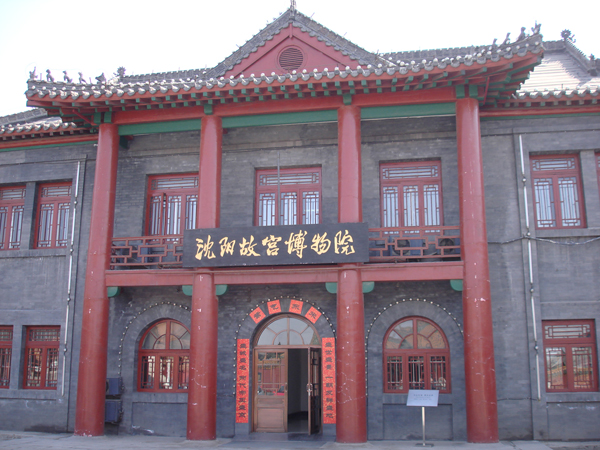Shenyang Mukden Imperial Palace
The Mukden Palace or Shenyang Gugong, also known as the Shenyang Imperial Palace, is the former imperial palace of the early Qing emperors before moving their capital to Beijing. It was built in 1625 and home to the first three emperors (who lived there from 1625 to 1644) of the Qing Dynasty (1644-1911) of China.
Early construction began in 1625 by Nurhaci. By 1631, additional structures were added under Emperor Huang Taiji. The Mukden Palace was built to resemble the Forbidden City in Beijing. However, the palace also exhibits hints of Manchurian and Tibetan styles. After the Qing Dynasty replaced the Ming Dynasty in 1644 in Beijing, the Mukden palace lost its status as the official residence of the Emperor. Instead, the Mukden Palace became a regional palace. In 1780, Emperor Qianlong further expanded the palace. Successive Qing dynasty emperors usually stayed at Mukden Palace for some time each year. Since the end of monarchy in China, the palace was converted to a museum that lies in the center of Shenyang city, Liaoning province. The museum has more than 300 Manchu-style buildings, covers an area of 60,000 square meters, and boasts more than 10,000 relics. In 2004, it was included on the UNESCO World Heritage List as an extension of the Imperial Palace site, or the Forbidden City, in Beijing.
Straight through the main gate at the far end of the courtyard is the main architecture on the east axis, the octagonal Dazhengdian (Hall of Great Affairs) with its coffered ceiling and an elaborate throne, built during the reign period of Nurharchi. It was here that Emperor Shunzhi was crowned before setting off to cross the Great Wall in 1644. On the central axis is the Chongzheng Hall, where Abahai attended to his political affairs; behind is the three towers Fenghuanglou (Phoenix Tower), and Qingninggong (Palace of Celestial Peace) in which Abahai and his concubines lived -- construction of these structures were completed during the reign period of Huangtaiji (the 8th son of Nurharchi).
In the courtyard in front of the hall are the Banner Pavilions, formerly administrative offices used by tribal chieftains. They now house displays of 17thand 18th-century military equipments, swords, and bows. The central courtyard west of Dazheng Hall contains a conference hall, some living quarters, and some shamanist structures. The courtyard to the western fringe is a residential area added on by Emperor Qianlong in the 18thcentury, and the Wenshu Gallery to the rear housed a copy of the Qianlong anthology. The front part of the Imperial Palace was built on the ground, while the rear part was on a 4-meter-tall support; showing a link to the customs of the Manchus who lived on mountain slopes.
Differing from the Palace Museum in Beijing, the Shenyang palace widely uses the five-color glazed tiles and its gables are made of bricks. Meanwhile it boasts of a double-heating system by using "kang (heatable brick beds)" and heatable floors. For example, there are "Wan Zi Kangs" in the west four rooms of the Qingninggong. The kangs are connected to each other in the south, west and north sides. This reflects the old living customs of the Manchus. Famous for its strong characteristics of the Man nationality and its abundant cultural relics, the Shenyang Palace Museum now functions as a museum and exhibits a huge collection of ivory and jade art crafts, musical instruments, furniture, and Ming and Qing paintings. For instance, "The Tiger-veined Double-Edged Sword" is the most famous among all artifacts used by Nurhachu, the first emperor of the Qing Dynasty. "The Nurhachu's imperial jade seal" is square in shape with a dragon-buttoned ribbon on it. The seal face is carved with Man and Han languages, which are intricately laid out with power and grandeur. There are also such valuable cultural relics as waist sword, bow and arrow, "imperial jade seal, "jade belt" and the chimes, bells, etc.
Admission: 60 yuan (US$9.81) / person
Useful Harbin Travel Tips
Top Harbin Tours
- 5-day Harbin Ice Festival China Snow Town Tour
.jpg)
- 5-day Harbin Train to Yabuli Ski Tour
- 4-day Harbin Ice & Snow World Festivel Ski Tour
- 3-day Harbin Ice Festival Join-in Group Tour
- 5-day Harbin Ice Ski Chagan Winter Fishing Festival Tour
- 4-day Harbin Ice Festival & Old Jewish Sites Tour
- 3-day Harbin Ice Festival Tour
- 3-day Harbin Ice Snow Festival Family Tour
- 6-day Harbin Yabuli Ski & China Snow Town Tour
- 5-day Hot Harbin Winter Festival Yabuli Skiing Tour














